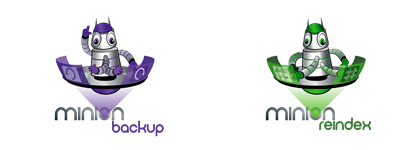New Server - do I go for RAID 10?
-
February 4, 2008 at 8:19 am
We have had a new server delivered for our ERP system (MS Dynamics AX, 40 users).
The server has an array of 6 disks, 300Gb each.
The server has been configured to have one large disk configured for RAID 10 (striped and mirrored) - as I'm used to separate disks for the OS, data and log files, this freaks me out a little. Wouldn't it be better to have 2 disks for the OS and the logs, and the remaining four for the data (I know this would mean losing some capacity - but would it affect performance?).
-
February 4, 2008 at 8:29 am
It will make some difference. Whether it will be noticeable is something else. It depends on your load on the server.
I'd think about moving to a R1 and a R10 or even 3 R1 arrays.
-
February 4, 2008 at 8:34 am
Separating them will usually improve performance.
If you really want to go whole hog, separate it one step further and put your non-clustered indexes on a separate drive. That'll usually make it even faster.
Of course, it all depends on how much database you have vs how much drive space, and the type of transactions and queries you'll be running. You will get more speed benefit on an OLTP database split this way and running lots of fast updates and a few small queries, vs a database with very few, long transactions and lots of big, complex queries.
- Gus "GSquared", RSVP, OODA, MAP, NMVP, FAQ, SAT, SQL, DNA, RNA, UOI, IOU, AM, PM, AD, BC, BCE, USA, UN, CF, ROFL, LOL, ETC
Property of The Thread"Nobody knows the age of the human race, but everyone agrees it's old enough to know better." - Anon
-
February 4, 2008 at 8:39 am
It would be better to have
os - 2 disks raid1
logs - 2 disks raid1
data - 2 disks raid1
This is an optimal hardware design to begin with. You may later see a need to split up the data files with a seperate raid array if you have a table or tables that see a lot of transactions.
Also, you should make sure you have 3 seperate raid controllers for the above scenario. 3 raid arrays on one controller would make the controller the bottleneck.
-
February 4, 2008 at 9:00 am
Separating data and logs will really only improve performance if you've got the spindles to support it. In general you're better off having everything on a lot of spindles than breaking them apart and allowing them to do less work. For example... let's say you have 10 spindles with everything on them. Even though you're having to deal with the contention, when you write you've got 10 spindles working for you so you're reading/writing faster. However if you split them up you're only writing with 5 spindles each. So experts tend to say that if you've got a limited number of spindles, it's best to keep them together.
Watch my free SQL Server Tutorials at:
http://MidnightDBA.com
Blog Author of:
DBA Rant – http://www.MidnightDBA.com/DBARant
Viewing 5 posts - 1 through 4 (of 4 total)
You must be logged in to reply to this topic. Login to reply
